Exploring the World of Fermented Foods: Benefits and Varieties
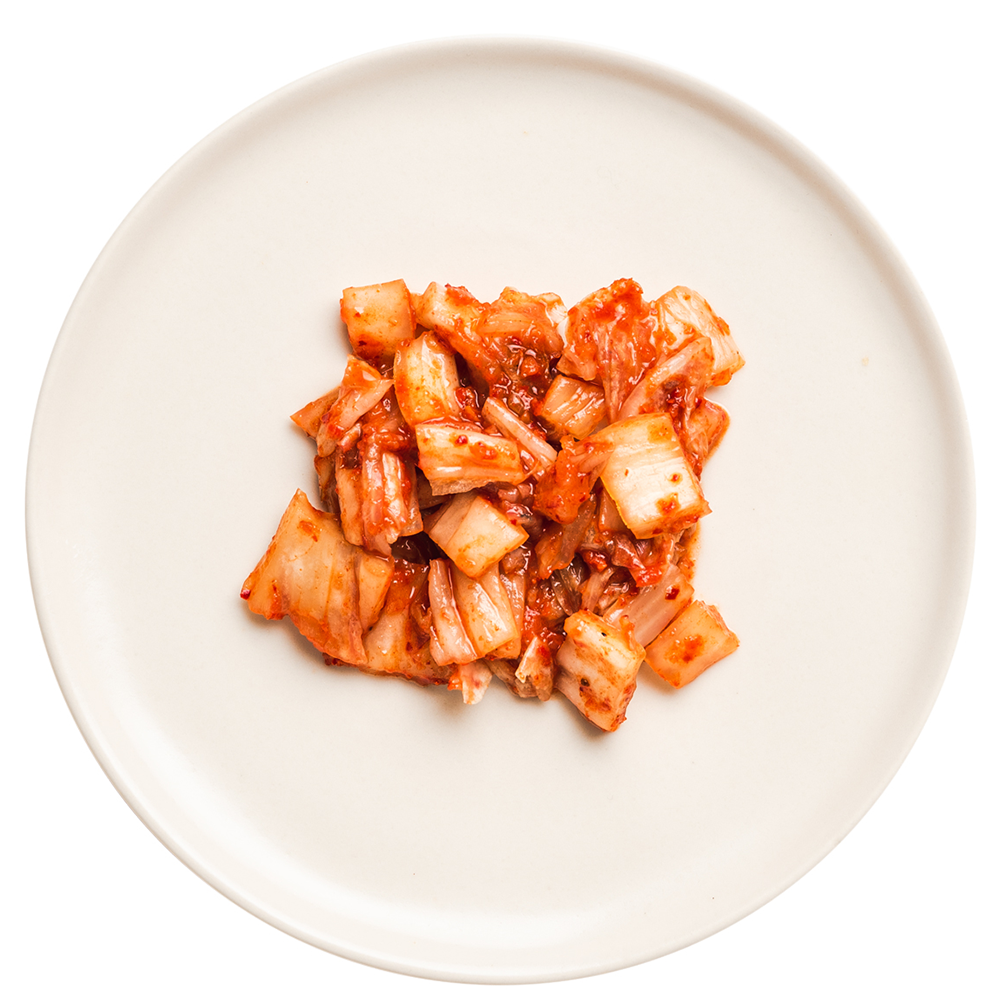
In recent years, fermented foods have gone from being traditional staples in various cultures to trending superfoods lining grocery store shelves. Centuries of health wisdom support this rise in popularity—and modern science is now catching up. From supporting gut health to enhancing nutrient absorption, fermented foods offer a natural way to boost your well-being. In this article, we’ll explore the benefits of fermented foods, the wide variety available globally, and most importantly, subtle ways to include them in your meals—whether you’re dining out, meal prepping at home, or building a personalized salad at places like SaladStop!, which also offers a range of house-made fermented options like kimchi and pickles. What Are Fermented Foods? Fermentation is a natural process in which microorganisms such as bacteria, yeast, and molds break down carbohydrates—like sugars and starches—into simpler compounds. This not only helps preserve food but also enhances its flavor, texture, and nutritional value. Some of the most common fermentation processes include lactic acid fermentation (used in yogurt, kimchi, and sauerkraut), acetic acid fermentation (used in vinegar and kombucha), and alcoholic fermentation (used in beer and wine). As a result, you get a tangy, flavorful product rich in beneficial compounds. Health Benefits of Fermented Foods 1. Gut Health Support Fermented foods are rich in probiotics—live bacteria that benefit the digestive system. In particular, these good bacteria help balance the gut microbiome, a community of microorganisms essential for digestion, nutrient absorption, immune response, and even mental health. 2. Improved Nutrient Absorption Fermentation can increase the bioavailability of vitamins and minerals. For example, fermented vegetables may offer more easily absorbable iron, calcium, and B vitamins compared to their raw counterparts. 3. Immune System Boost A balanced gut microbiome contributes to a strong immune system. By regularly consuming fermented foods, you may reduce inflammation and increase your body’s resilience to illness. 4. Natural Preservation The acids and antimicrobial compounds produced during fermentation naturally preserve the foods, making them a safer and more sustainable choice—free from artificial preservatives. 5. Enhanced Flavor and Satiety The bold, umami-rich flavor of fermented foods can elevate any meal while also promoting satiety, helping with portion control and mindful eating. Popular Types of Fermented Foods Around the World 1. Kimchi (Korea) Koreans prepare kimchi, a staple in their cuisine, by fermenting vegetables—usually napa cabbage and radish—and seasoning them with chili flakes, garlic, ginger, and fish sauce. It’s tangy, spicy, and full of probiotics. 2. Sauerkraut (Germany) This finely shredded cabbage fermented in its own juices is rich in fiber and vitamins C and K. It’s a versatile topping for sandwiches and grain bowls. 3. Yogurt and Kefir (Global) These cultured dairy products are fermented with specific strains of bacteria and are great sources of calcium, protein, and probiotics. Kefir contains a broader range of beneficial microbes. 4. Pickles (Various) Fermented cucumbers—often simply called pickles—are crisp, tangy, and make a perfect gut-friendly snack. Traditional pickling uses brine and natural fermentation rather than vinegar. 5. Miso (Japan) Made from fermented soybeans, miso is a paste used in soups, dressings, and marinades. It’s rich in umami flavor and contains beneficial enzymes and probiotics. 6. Tempeh (Indonesia) This protein-rich product made from fermented soybeans has a firm texture and nutty flavor, making it a popular meat substitute in plant-based diets. 7. Kombucha (China) A fizzy fermented tea, kombucha is brewed using a symbiotic culture of bacteria and yeast (SCOBY). It’s slightly sweet, slightly acidic, and rich in probiotics and antioxidants. Adding Fermented Foods to Your Diet Incorporating fermented foods into your daily meals doesn’t have to be complicated. You can start small by adding a spoonful of kimchi to your rice bowl, a side of sauerkraut to your sandwich, or a few pickled vegetables to your salad. At SaladStop!, customizing your own bowl or wrap means you can easily add probiotic-rich foods to your lunch. Options like house-made kimchi, brined pickles and miso-based dressings offer subtle but effective ways to enjoy the benefits of fermentation without changing your usual order. These not only add complexity to flavor but also enhance your gut health with every bite. You can even plan ahead and preorder your next gut-friendly meal here to save time and stay on track with your nutrition goals. Fermented foods are more than just a trend—they’re time-tested, nutrient-dense additions to a healthy diet. With benefits ranging from improved digestion to enhanced immunity, there’s every reason to give them a place on your plate. As awareness grows, so do the options for integrating these powerful foods into everyday meals. Whether you’re preparing them at home, exploring global cuisines, or customizing your lunch at SaladStop!, fermented foods offer a simple and delicious way to nourish your body from the inside out.
Mindful Eating Practices for a Healthier Relationship with Food

Developing a healthy relationship with food goes beyond simply choosing the right ingredients — it’s about the way we approach each meal. Mindful eating is a powerful practice that encourages us to be fully present during meals, helping us tune into our body’s natural signals and appreciate the nourishment food provides. By cultivating awareness around when, what, and how we eat, we can transform mealtimes into a source of satisfaction, balance, and well-being. Here’s how mindful eating can help improve your eating habits and support long-term health. 1. Make Time for Meals Carving out dedicated time for meals, even when life feels busy, is an important part of mindful eating. Sitting down for breakfast, lunch, or dinner — rather than grabbing a quick bite while multitasking — creates the space to enjoy your food and notice how it affects your body. This intentional approach can lead to better digestion, a stronger sense of satisfaction after eating, and more conscious food choices. It’s not about adding more to your schedule but about treating meals as an important part of your day. 2. Notice the Details of Your Food Mindful eating begins with observation. Before you take a bite, take a moment to look at your meal — the colors, the arrangement, and the aroma. As you eat, pay attention to textures, flavors, and the changing sensations in your mouth. This practice makes meals more enjoyable and helps you recognize what types of food truly satisfy you. Over time, you may find yourself gravitating toward meals that nourish both your body and your senses. 3. Listen to Your Body’s Signals Our bodies send clear messages about hunger and fullness, but it takes practice to notice them. With mindful eating, you learn to pause and check in with yourself: How hungry am I before I start eating? How does my body feel during the meal? Am I comfortably full, or do I need a little more? Responding to these cues helps prevent overeating and allows you to meet your body’s needs without guilt or restriction. 4. Create a Supportive Environment The space where you eat can influence how you eat. Choose a calm and pleasant setting — whether that’s at your dining table, at a cozy café, or on a park bench. Step away from work, screens, and distractions when possible. Restaurants that emphasize fresh, nourishing options, like SaladStop!, can make it easier to stay in tune with mindful eating principles even when dining out. Choosing meals made with whole ingredients and sustainable practices reinforces a thoughtful, intentional approach to food. 5. Approach Food Without Judgment Many people carry guilt or shame around their food choices, which can damage their relationship with eating. Mindful eating encourages a nonjudgmental attitude. Instead of labeling foods as “good” or “bad,” focus on how they make you feel physically and emotionally. By removing moral value from food, you can break free from cycles of restriction and overindulgence, ultimately developing a more balanced and sustainable way of eating. 6. Practice Gratitude Gratitude can deepen the mindful eating experience. Consider the effort and resources that went into producing your meal — from the farmers and producers to the people who prepared the food. A brief moment of thanks can create a meaningful connection between you and your food, reinforcing respect and appreciation for the nourishment you receive. The Benefits of Mindful Eating Practicing mindful eating over time can bring numerous benefits: Most importantly, mindful eating helps cultivate a peaceful, positive relationship with food that supports both physical health and emotional well-being. Mindful eating is not a quick fix or a rigid set of rules — it’s a lifelong practice of bringing awareness and care to your meals. Start with small changes, like noticing the taste of your food or checking in with your hunger level before eating. Whether you’re enjoying a homemade meal or a fresh, nutrient-packed salad or bowl from SaladStop!, mindful eating invites you to slow down, tune in, and nourish yourself in a way that feels good both physically and emotionally. By embracing these simple yet powerful practices, you can build a healthier, more joyful relationship with food — one mindful bite at a time.
The Impact of Omega-3 Fatty Acids on Cardiovascular Health
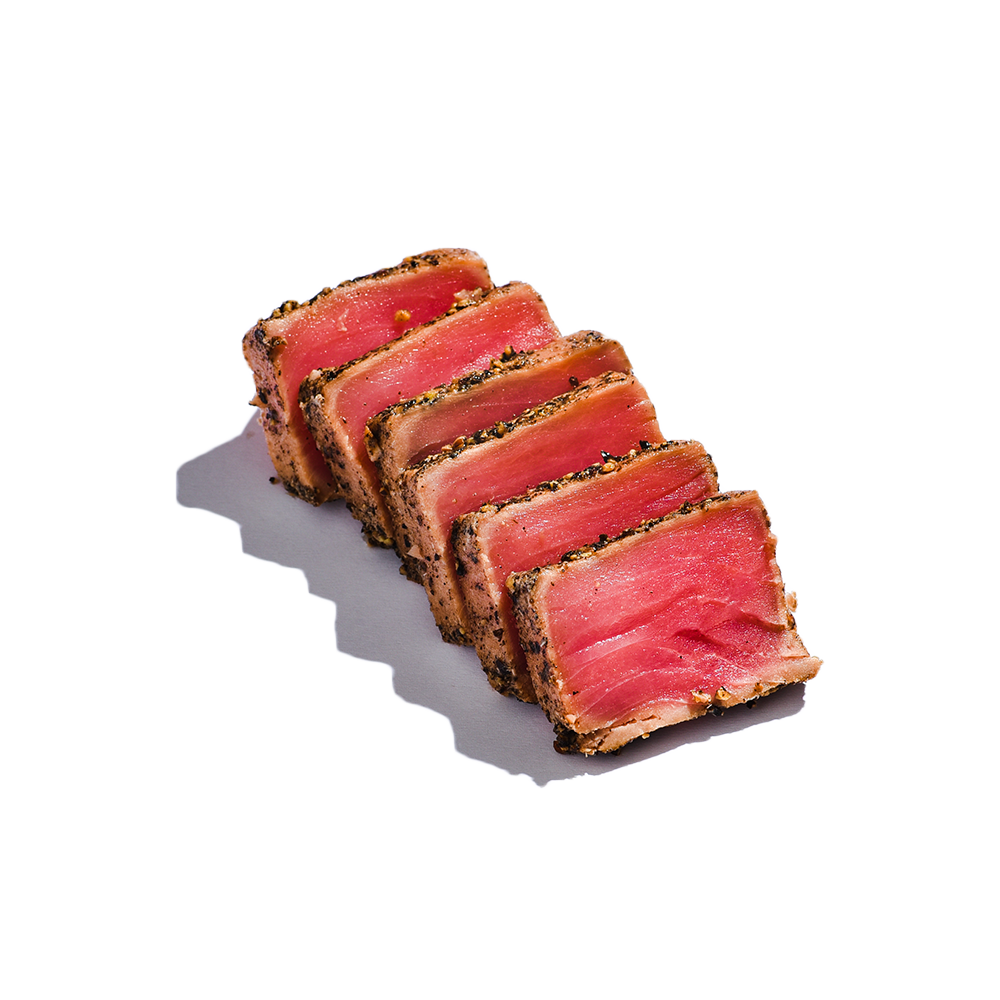
When it comes to protecting your heart, the food you eat can be one of your most powerful allies. While exercise and stress management play important roles, research continues to show that specific nutrients can make a measurable difference—especially omega-3 fatty acids. Known for their heart-protective properties, these essential fats are more than just a trend; they’re a scientifically backed way to support long-term cardiovascular health through simple, everyday choices. What Are Omega-3 Fatty Acids? Omega-3 fatty acids are a type of polyunsaturated fat that our bodies can’t produce on their own. The three most important types include: These fats are vital for brain development, inflammation control, and, notably, cardiovascular function. How Omega-3s Support Heart Health Numerous studies have demonstrated the powerful impact of omega-3 fatty acids on cardiovascular health. Here’s how they help: 1. Lowering Triglycerides High triglyceride levels can increase your risk of heart disease. Omega-3s, particularly EPA and DHA, have been shown to reduce triglyceride levels significantly—by as much as 30% in some cases. 2. Reducing Blood Pressure Regular consumption of omega-3s has been associated with modest reductions in blood pressure, especially among individuals with hypertension. This benefit is particularly valuable, given the strong link between high blood pressure and heart disease. 3. Preventing Arrhythmias Omega-3 fatty acids may help stabilize the heart’s electrical system, reducing the risk of arrhythmias (irregular heartbeats) that can lead to cardiac arrest. 4. Decreasing Inflammation Chronic inflammation is a key driver of many cardiovascular conditions. Omega-3s exhibit anti-inflammatory properties that help calm systemic inflammation, offering protection against the development of atherosclerosis (plaque buildup in arteries). 5. Improving Cholesterol Levels While omega-3s do not directly lower LDL (bad) cholesterol, they can increase HDL (good) cholesterol, contributing to better overall lipid profiles. Dietary Sources of Omega-3s The best way to boost omega-3 intake is through whole food sources: Making Omega-3s Part of Everyday Meals The key to reaping the cardiovascular benefits of omega-3s lies in consistency and variety. Whether you’re enjoying a salmon poke bowl for lunch or snacking on a handful of walnuts, small choices add up. At SaladStop!, for example, integrating omega-3 rich ingredients into bowls and salads is part of the brand’s commitment to nutritious and balanced meals. Options featuring ingredients like roasted almonds, edamame, flaxseeds, or premium sustainably-sourced tuna (such as in the Tuna San salad) provide heart-friendly nutrients without compromising on taste. These thoughtful ingredient choices reflect a broader philosophy—making healthy eating accessible and exciting. By choosing meals that combine flavor and function, you’re not just feeding your cravings, you’re fueling your wellness goals. Omega-3 fatty acids are one of nature’s most potent tools in the fight against heart disease. From reducing inflammation to improving lipid profiles and supporting stable heart rhythms, their cardiovascular benefits are extensive and well-documented. Incorporating omega-3-rich foods into your diet doesn’t have to be difficult or dull. Whether it’s through home-cooked meals, smart snacking, or health-focused dining options like those available at SaladStop!, small shifts in your diet can translate into major gains for your heart. By prioritizing nutrient-dense foods and understanding the science behind them, you’re investing in a healthier, stronger future—one delicious bite at a time. Whether you’re preparing meals at home or choosing convenient, balanced options on the go, every choice counts. For a quick, heart-healthy meal made with purposefully selected ingredients, order now at SaladStop! and enjoy food that’s good for your body and your heart.
Harvest Bowl: A Nutrient-Dense Hearty Delight
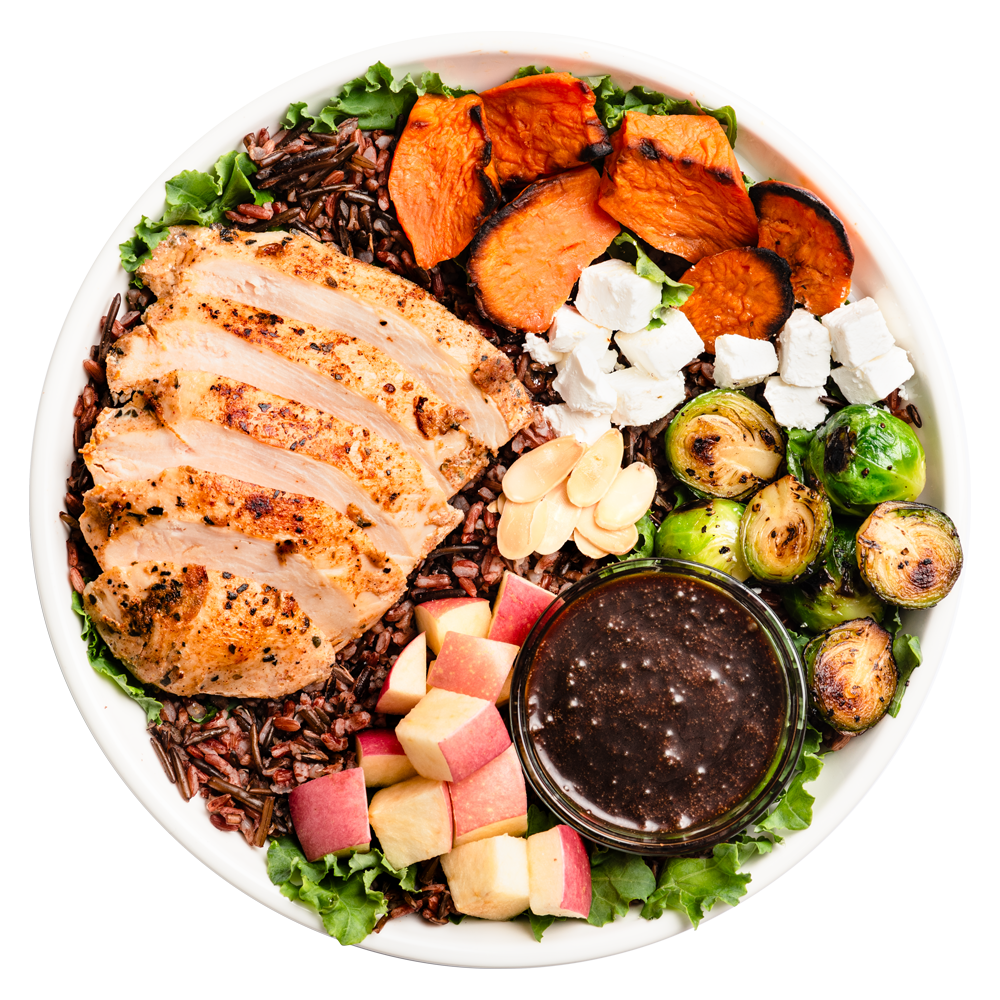
In a sea of salad choices, one warm bowl has earned its place as a customer favorite. Meet the Harvest Bowl—one of SaladStop!’s best-selling creations, beloved for its comforting flavors and nourishing ingredients. Designed to be both hearty and wholesome, this warm protein bowl is a go-to for anyone seeking a meal that satisfies cravings while supporting wellness goals. It’s not just popular—it’s a staple for those who value clean eating without compromising on taste. What Is the Harvest Bowl? The Harvest Bowl is a warm, satisfying dish designed to offer a complete meal in one bowl. It features a wholesome mix of sous-vide chicken, organic wild rice, kale, roasted sweet potatoes, Brussels sprouts, red apples, feta cheese, and toasted almonds, all brought together with a delicious Truffle Balsamic Vinaigrette made with extra virgin olive oil. This bowl was created for those who crave comfort food without compromising on nutrition. It’s filling, flavorful, and full of functional ingredients that support your overall health. Nutrient-Dense Ingredients That Make a Difference Each element of the Harvest Bowl was chosen for both its taste and its nutritional profile. Let’s break down the superstars in this warm protein bowl: 1. Sous-vide Chicken Sous-vide cooking ensures that the chicken stays juicy and tender without the need for excessive oil or high-heat cooking methods. Packed with lean protein, chicken helps build and repair muscle, keeps you fuller for longer, and supports metabolic function. 2. Organic Wild Rice Unlike refined grains, organic wild rice is high in fiber, antioxidants, and B vitamins. It’s a fantastic source of complex carbohydrates, which provide sustained energy and help regulate blood sugar levels. 3. Kale One of the most nutrient-dense vegetables on the planet, kale delivers a powerful punch of vitamin K, vitamin C, calcium, and fiber. It’s also known for its anti-inflammatory and antioxidant benefits, which support everything from brain health to immune function. 4. Roasted Sweet Potatoes Sweet potatoes are a rich source of beta-carotene (vitamin A), potassium, and fiber. They provide slow-digesting carbohydrates that fuel the body while promoting gut health and helping regulate blood pressure. 5. Brussels Sprouts Cruciferous vegetables like Brussels sprouts are loaded with glucosinolates, compounds that support detoxification and hormonal balance. They’re also high in vitamin C and folate, crucial for skin health and cellular repair. 6. Red Apples These fresh, crisp fruits add a natural sweetness to the bowl along with a healthy dose of soluble fiber (especially pectin), which supports digestion and helps manage cholesterol levels. 7. Feta Cheese Feta adds a creamy, tangy flavor while contributing a good amount of calcium, phosphorus, and B vitamins. It also supports gut health thanks to its fermentation process. 8. Toasted Almonds These nutrient powerhouses bring crunch and heart-healthy monounsaturated fats, along with vitamin E, magnesium, and plant-based protein. 9. Truffle Balsamic Vinaigrette (Made with EVOO) Our signature vinaigrette ties it all together with the richness of truffle and the benefits of extra virgin olive oil (EVOO). EVOO is loaded with polyphenols, which are powerful antioxidants known to support heart health, reduce inflammation, and even protect against cognitive decline. Why Choose the Harvest Bowl? If you’re looking for a meal that checks all the boxes—flavor, fullness, and functional nutrition—the Harvest Bowl delivers. It’s gluten-free, balanced in macronutrients, and ideal for a post-workout meal, a cozy lunch, or a power-packed dinner. Benefits of the Harvest Bowl: A Perfect Fit for Your Healthy Lifestyle The Harvest Bowl is part of SaladStop!’s mission to make clean, conscious eating both convenient and craveable. Whether you’re following a wellness plan, eating intuitively, or simply trying to get more greens in your diet, this warm protein bowl is a smart and satisfying choice. You can enjoy it in-store, order it online for pickup or delivery, or even include it in your weekly routine through SaladStop!’s meal subscriptions. Try the Harvest Bowl Today Craving something warm, wholesome, and nutrient-packed? The Harvest Bowl is ready to meet you wherever you are in your wellness journey. From its thoughtfully sourced ingredients to its deliciously bold flavor, it’s a bowl that not only tastes good—it does good for your body. Try it now here!
The Role of Dietary Fiber in Preventing Chronic Diseases
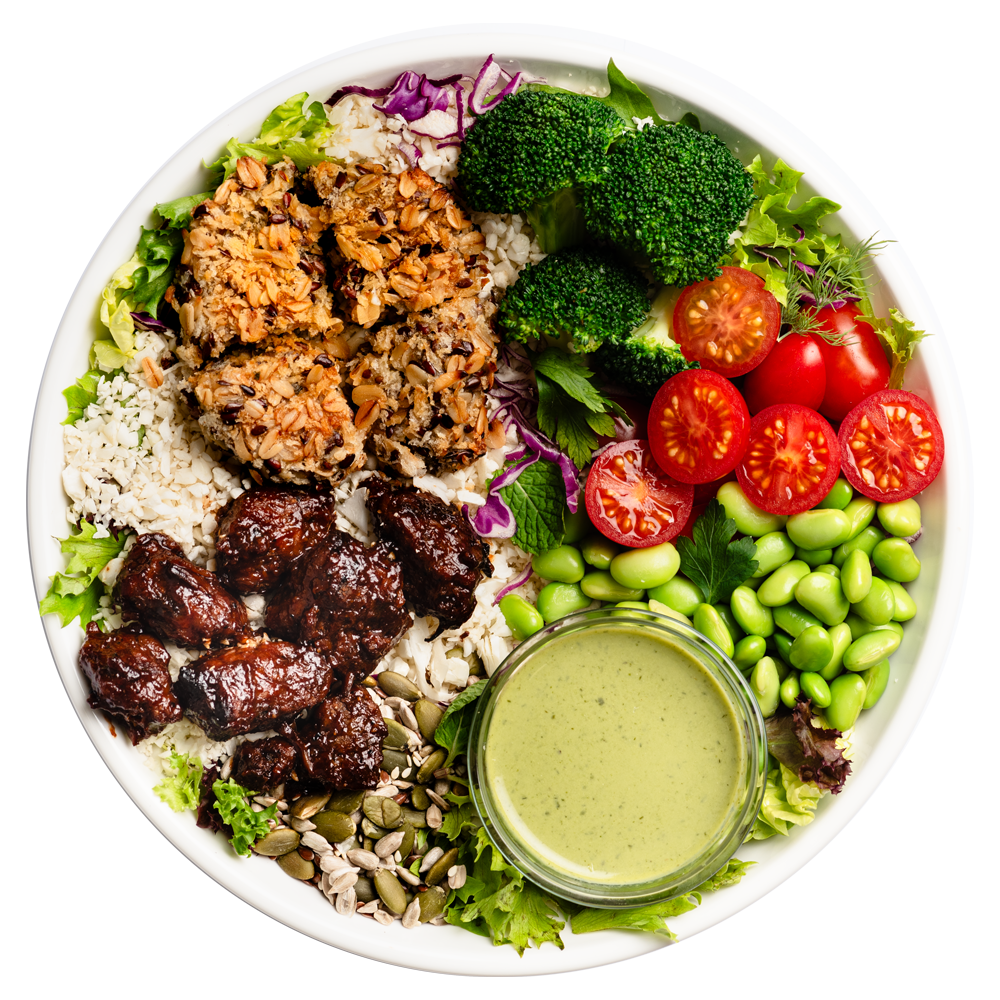
Chronic diseases such as heart disease, type 2 diabetes, and digestive disorders continue to rise globally, often linked to poor diet and sedentary lifestyles. While many factors contribute to long-term health, one simple yet powerful element often goes overlooked—dietary fiber. Found naturally in plant-based foods, fiber doesn’t just support digestion; it plays a protective role against some of the most common chronic illnesses affecting people today. Understanding its benefits and incorporating it into your daily meals can make a significant impact on your long-term well-being. Despite its proven benefits, fiber is one of the most under-consumed nutrients in modern diets. According to global dietary surveys, the average person consumes far less than the recommended 25–38 grams per day. So why does fiber matter so much, and how can you make sure you’re getting enough—especially in a way that’s both convenient and delicious? Let’s take a closer look. What Is Dietary Fiber? Dietary fiber refers to the parts of plant foods that your body can’t digest or absorb. Unlike fats, proteins, and carbohydrates, fiber isn’t broken down and absorbed by the body. Instead, it passes relatively intact through your stomach, small intestine, and colon. Fiber is typically categorized into two types: Both types are essential for optimal health. How Fiber Helps Prevent Chronic Diseases 1. Supports Heart Health Soluble fiber has a proven track record in reducing LDL (bad) cholesterol levels. It binds to cholesterol particles in the digestive system and helps remove them from the body before they can enter the bloodstream. Studies have shown that increasing fiber intake—particularly from whole grains, legumes, fruits, and vegetables—can significantly reduce the risk of cardiovascular disease. 2. Regulates Blood Sugar Fiber, especially soluble fiber, slows down the digestion and absorption of sugar, preventing sharp spikes in blood glucose levels. For people with type 2 diabetes, a high-fiber diet can improve glycemic control. For everyone else, it can help reduce the risk of developing insulin resistance and diabetes over time. 3. Aids in Weight Management Fiber-rich foods are typically more filling and less calorie-dense. That means they help you feel fuller for longer, naturally curbing appetite and reducing the likelihood of overeating. In fact, people who eat high-fiber meals tend to consume fewer calories overall, which can support sustainable weight management and reduce the risk of obesity. 4. Promotes Gut Health Insoluble fiber adds bulk to the stool and promotes regular bowel movements, which helps prevent constipation and supports a healthy digestive tract. Meanwhile, certain types of soluble fiber act as prebiotics, feeding the beneficial bacteria in your gut. A balanced gut microbiome is closely linked to improved immune function, reduced inflammation, and even mental well-being. 5. May Lower Cancer Risk There is emerging evidence that a fiber-rich diet may help lower the risk of certain types of cancers, particularly colorectal cancer. Fiber speeds up the passage of waste through the digestive system, reducing the time harmful substances stay in contact with the intestinal lining. Getting More Fiber into Your Diet Adding more fiber to your meals doesn’t have to be difficult. Start with small, consistent changes like: Build Your Own High-Fiber Bowl at SaladStop! If you’re looking for a quick, tasty, and customizable way to boost your fiber intake, SaladStop! has you covered. With our Create Your Own (CYO) bowl option, you can load up on fiber-rich ingredients like kale, broccoli, chickpeas, red quinoa, lentils, chia seeds, and more. Whether you’re aiming to support heart health, manage blood sugar, or simply improve digestion, our CYO bowls let you take control of your nutrition—without sacrificing flavor. Start crafting your perfect high-fiber meal today by visiting our Create Your Own Bowl page and exploring the wide range of wholesome, plant-powered ingredients available. Incorporating more dietary fiber into your daily routine is a small change with powerful long-term health benefits. From protecting your heart to keeping your gut microbiome thriving, fiber plays a vital role in disease prevention and overall wellness. By making fiber a consistent part of your meals—whether at home or with a nourishing bowl from SaladStop!—you’re investing in a healthier, more resilient future.
The Role of Mitochondrial Nutrition in Energy Production

Mitochondria is the powerhouse of the cell. They play a crucial role in energy production. Understanding mitochondrial nutrition is essential for optimizing energy levels and overall health. Mitochondria convert nutrients from food into adenosine triphosphate (ATP), the energy currency of the body. This article explores the role of mitochondrial nutrition in energy production and its implications for health. What Are Mitochondria? Nearly all eukaryotic cells contain mitochondria, which are organelles. They have a unique structure, consisting of two membranes. The smooth outer membrane contrasts with the highly folded inner membrane, which forms structures called cristae. These cristae, therefore, increase the surface area for chemical reactions. Additionally, mitochondria contain their own DNA, which is separate from the cell’s nuclear DNA. This unique feature allows them to replicate independently. Energy Production and ATP The primary function of mitochondria, therefore, is to produce ATP. They achieve this, in turn, through a process called oxidative phosphorylation. This process occurs in the inner mitochondrial membrane. Here, electrons derived from nutrients are transferred through a series of protein complexes. As electrons move through these complexes, they release energy. The energy pumps protons across the inner membrane, creating a proton gradient. The return flow of protons into the mitochondrial matrix drives ATP synthesis. The mitochondria release ATP into the cytoplasm, where it fuels various cellular processes. As a result, this entire process highlights the importance of mitochondrial health for energy production. The Impact of Nutrition on Mitochondrial Function Nutrition plays a significant role in mitochondrial function. The types of nutrients consumed, therefore, directly influence ATP production. Specifically, mitochondria primarily use carbohydrates, fats, and proteins as fuel sources. Each nutrient goes through different metabolic pathways to produce energy. 1. Carbohydrates: Carbohydrates are broken down into glucose. Glucose enters glycolysis, a process that takes place in the cytoplasm. The end products of glycolysis are pyruvate and ATP. The mitochondria convert pyruvate into acetyl-CoA. This compound enters the citric acid cycle, generating more ATP. 2. Fats: Fats are metabolized through a process called beta-oxidation. The body breaks down fatty acids into acetyl-CoA, which then enters the citric acid cycle. Fats provide a more concentrated energy source compared to carbohydrates. This makes them an important fuel for prolonged physical activity. 3. Proteins: Proteins can also serve as an energy source. However, they are primarily used for tissue repair and growth. Amino acids are converted into various intermediates that enter the citric acid cycle. Key Nutrients for Mitochondrial Health Several nutrients support mitochondrial function and energy production. These include vitamins, minerals, and antioxidants. Here are some key nutrients essential for mitochondrial health: 1. B Vitamins: B vitamins, particularly B1 (thiamine), B2 (riboflavin), B3 (niacin), B5 (pantothenic acid), and B7 (biotin), are vital for energy metabolism. They act as coenzymes in various metabolic pathways, assisting in the conversion of nutrients into ATP. 2. Coenzyme Q10 (CoQ10): CoQ10 is a powerful antioxidant found in the mitochondria. It plays a crucial role in the electron transport chain, facilitating ATP production. CoQ10 levels decline with age, making supplementation beneficial for mitochondrial health. 3. Magnesium: Magnesium is a key mineral involved in ATP production. It serves as a cofactor for over 300 enzymatic reactions, including those in energy metabolism. 4. Antioxidants: Mitochondria generate reactive oxygen species (ROS) during energy production. High levels of ROS can damage mitochondrial DNA and proteins. Antioxidants like vitamins C and E help neutralize these free radicals, protecting mitochondrial health. The Effects of Poor Mitochondrial Nutrition Poor nutritional choices can lead to impaired mitochondrial function. Diets high in refined sugars and unhealthy fats can hinder energy production. This can result in fatigue, reduced physical performance, and increased risk of chronic diseases. Furthermore, mitochondrial dysfunction is linked to various health issues. Conditions such as diabetes, obesity, and neurodegenerative diseases have mitochondrial components. Therefore, optimizing mitochondrial nutrition is essential for preventing these conditions. Strategies for Supporting Mitochondrial Nutrition Mitochondrial nutrition plays a crucial role in energy production and overall health. Understanding the relationship between nutrition and mitochondrial function empowers individuals to make informed dietary choices. By prioritizing nutrient-rich foods, individuals can support their mitochondrial health and enhance energy production. This, in turn, promotes vitality and well-being in daily life. If you’re looking to optimize your mitochondrial health through diet, using tools like the SaladStop! Nutritional Calculator can help you track the nutrients in your meals and make healthier, more informed choices. It’s a great resource for personalizing your diet to support both energy levels and overall well-being. You can try it out here: SaladStop! Nutritional Calculator.
The Role of Food in Different Cultures: A Culinary Exploration

Food is much more than sustenance; it’s a bridge to cultural identity, tradition, and community. At SaladStop!, we embrace this profound connection by celebrating the diversity of global cuisines, culinary traditions, and the rich tapestry of culinary culture that unites us all. Bringing Authentic Flavors to Life At SaladStop!, we are committed to delivering authentic tastes inspired by the world’s culinary traditions. To ensure this, we go beyond just studying recipes—we travel to the heart of these cultures, collaborating with local chefs and food artisans to learn the nuances of their cuisine. For example, our latest Limited-Time Offering (LTO) was inspired by the breathtaking island of Santorini. The Kiki! Salad captures the essence of Greek cuisine with its refreshing flavours and bold simplicity, designed to transport you straight to the sun-soaked shores of the Aegean. Our Seoul-ful Warm Protein Bowl, a staple in our menu, pays tribute to the rich heritage of Korean cuisine. This dish features a harmonious blend of traditional ingredients like seared tuna, baked mushrooms, radish pickles, and sesame seeds, all elevated with the zesty punch of Yuja Vinaigrette. Every element reflects the balance and vibrancy synonymous with Korean food. Staying True to Culture and Craft Our dedication to cultural authenticity means respecting the stories and traditions behind the food. For instance, we source sustainable quinoa from Bolivia, where this nutrient-rich grain has been cultivated for centuries. Similarly, we use olives from Malaysia, highlighting the country’s expertise in growing and producing this versatile ingredient. By sourcing responsibly, we ensure every dish honours its origins, supports ethical practices, and celebrates the culinary heritage of its culture. Whether it’s Bolivian quinoa, Malaysian olives, or Japanese Yuzu, we ensure each dish pays homage to its origin. Our team works tirelessly to bring these flavours to life in ways that respect their roots while delighting our customers. Culinary Diversity Meets Sustainability At SaladStop!, we don’t just honour flavours; we align them with sustainable practices. Our menu items are crafted with responsibly sourced ingredients, ensuring that every dish is both culturally significant and environmentally conscious. The evolving nature of food also inspires us to innovate. By blending cultural traditions with modern tastes, we create dishes that resonate globally. Seasonal menu items and Limited-Time Offerings (LTOs) like the Santorini-inspired Kiki! Salad give our customers a chance to experience the flavours of the world in a way that’s fresh, authentic, and uniquely SaladStop! Why It Matters Food carries the power to connect, unite, and tell stories. At SaladStop!, our mission is to celebrate these stories through every dish we create. By bringing authentic global flavours to the table, we invite you to embark on a culinary journey that highlights the beauty of diversity. Explore our menu today and taste the world—one bowl at a time.
Simplify Healthy Eating with Wisebite by SaladStop!
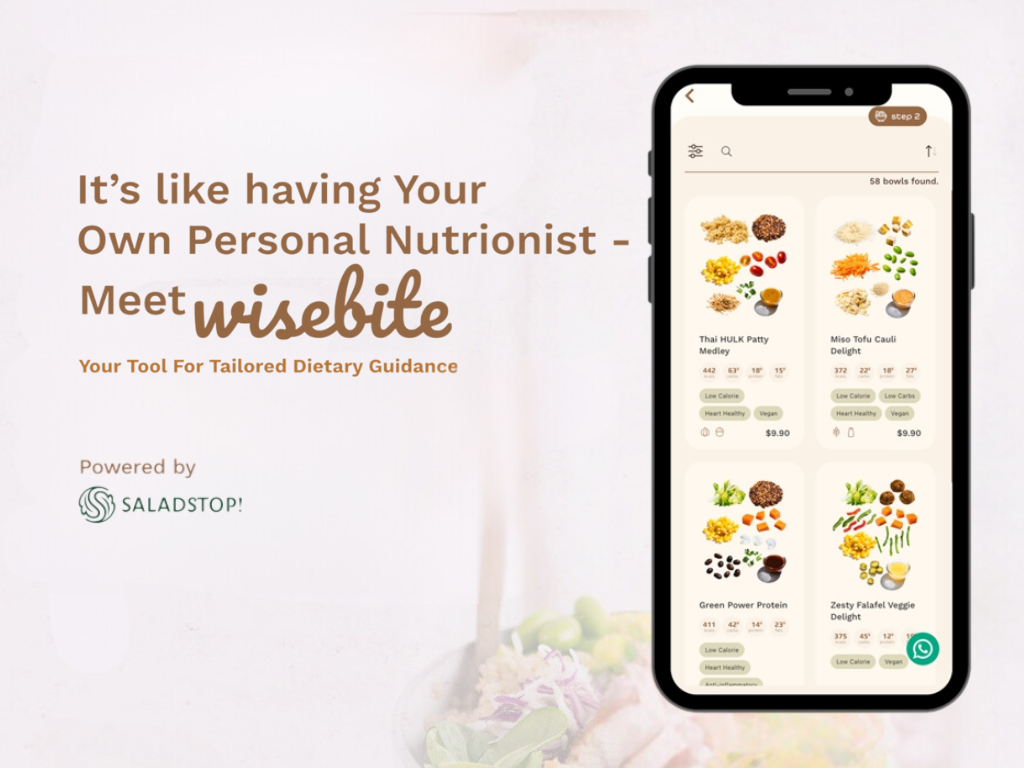
Healthy eating should be simple, satisfying, and tailored to your needs. That’s where Wisebite, SaladStop!’s revolutionary platform, comes in. Designed to make personalized nutrition effortless, Wisebite helps you align your meals with your unique health goals. With over 500 customized meal options, this platform turns healthy eating into a stress-free and enjoyable experience. How Does Wisebite Work? Wisebite is built for ease and accessibility. Here’s how you can create a meal designed specifically for you: Nutrition at Its Best Wisebite ensures that your meal not only tastes great but also meets your specific dietary requirements. Each recipe adheres to the following guidelines: Allergy-Friendly Options Wisebite also prioritizes safety and inclusivity. You can filter meals to avoid common allergens such as gluten, dairy, nuts, and allium, ensuring that every choice suits your needs. No Commitments, Just Convenience Wisebite makes personalized eating as accessible as possible. There are no sign-ups, no subscriptions, and no commitments. Simply scan the in-store QR code to access the Wisebite dashboard. From there, you can start tailoring your meals in minutes. Why Choose Wisebite? Healthy Eating, Simplified Wisebite takes the hassle out of healthy eating by doing the planning for you. Whether you’re pursuing weight loss, muscle gain, or a balanced diet, this platform ensures your meals work for you. With no commitments and endless flexibility, Wisebite empowers you to make every bite count. Visit your nearest SaladStop! outlet, scan the QR code, and let Wisebite guide you to a healthier, happier you—one customized meal at a time.
The Connection Between Diet and Epigenetics

Epigenetics is a groundbreaking field that uncovers how environmental factors can influence the activity of our genes without altering the DNA sequence itself. Think of it as the bridge between nature and nurture, revealing how lifestyle choices, including diet, can turn genes on or off, thereby affecting health outcomes. This science demonstrates that we are not merely at the mercy of our genetic makeup; instead, we can actively shape our health by influencing how our genes are expressed. As highlighted in the study The Impact of Nutrition and Environmental Epigenetics on Human Health and Disease, dietary choices can significantly affect gene expression through mechanisms such as DNA methylation and histone modification. This underscores the power of nutrition to alter epigenetic patterns, thereby reducing the risk of chronic diseases and promoting overall health. One of the most compelling areas of epigenetics is the role of nutrition. What we eat doesn’t just fuel our bodies—it communicates with our DNA, triggering chemical changes that regulate gene activity. These changes can have profound effects on our risk of developing chronic diseases, our mental and physical health, and even our longevity. Foods rich in specific nutrients and bioactive compounds can promote beneficial epigenetic modifications, while diets high in processed or unhealthy foods may contribute to harmful changes. By understanding the connection between diet and epigenetics, we can harness the power of food to optimize gene expression, paving the way for improved health and disease prevention. Let’s dive deeper into how dietary choices can shape our epigenetic landscape. How Diet Influences Epigenetics Diet has a direct impact on the chemical processes that regulate gene expression, such as DNA methylation and histone modification. These processes control whether a gene is active or silent. Below, we explore how specific dietary components influence epigenetic mechanisms and their effects on health. 1. Fruits and Vegetables: Epigenetic Powerhouses Fruits and vegetables are loaded with polyphenols, vitamins, and antioxidants that can positively influence gene expression. Example: Regular consumption of polyphenol-rich vegetables, such as cruciferous vegetables, has been shown to regulate genes that suppress tumor formation. 2. Healthy Fats: Nourishing Your Genes Omega-3 fatty acids, found in foods like salmon, walnuts, and flaxseeds, play a crucial role in promoting beneficial epigenetic changes. Example: Studies suggest that omega-3 fatty acids can enhance gene expression related to neuroplasticity, improving memory and learning. 3. Whole Grains: Supporting Metabolic Health Whole grains like quinoa, oats, and brown rice deliver fiber and micronutrients that actively enhance healthy gene expression. Example: Regular consumption of whole grains has been linked to favorable changes in genes that regulate blood sugar levels, supporting long-term metabolic health. 4. Fermented Foods: Gut Health and Gene Expression Fermented foods like yogurt, kimchi, and sauerkraut contain probiotics that positively impact the gut microbiome, which in turn influences epigenetics. Example: A diet rich in fermented foods may enhance gene expression related to anti-inflammatory pathways, promoting overall health. 5. Processed Foods: The Epigenetic Downside Diets high in processed foods, refined sugars, and unhealthy fats are linked to negative epigenetic changes. Example: A high-sugar diet can lead to epigenetic modifications that impair insulin signaling, raising the risk of type 2 diabetes. Nutrients That Drive Epigenetic Changes Certain nutrients are particularly influential in epigenetic modifications: Practical Tips for an Epigenetically Healthy Diet Understanding the connection between diet and epigenetics empowers individuals to make better dietary choices. Here’s how to support positive gene expression: The science of epigenetics offers a powerful perspective on how lifestyle choices, especially diet, can influence our genetic destiny. By embracing nutrient-dense, whole foods and minimizing processed options, we can support beneficial gene expression and reduce the risk of chronic diseases. As research in this field continues to evolve, it reinforces the idea that food is not just sustenance—it’s a tool to optimize health at the molecular level. Start making intentional dietary choices today, and unlock the potential for a healthier tomorrow.
Seoul-ful: Korean-Inspired Warm Protein Bowl
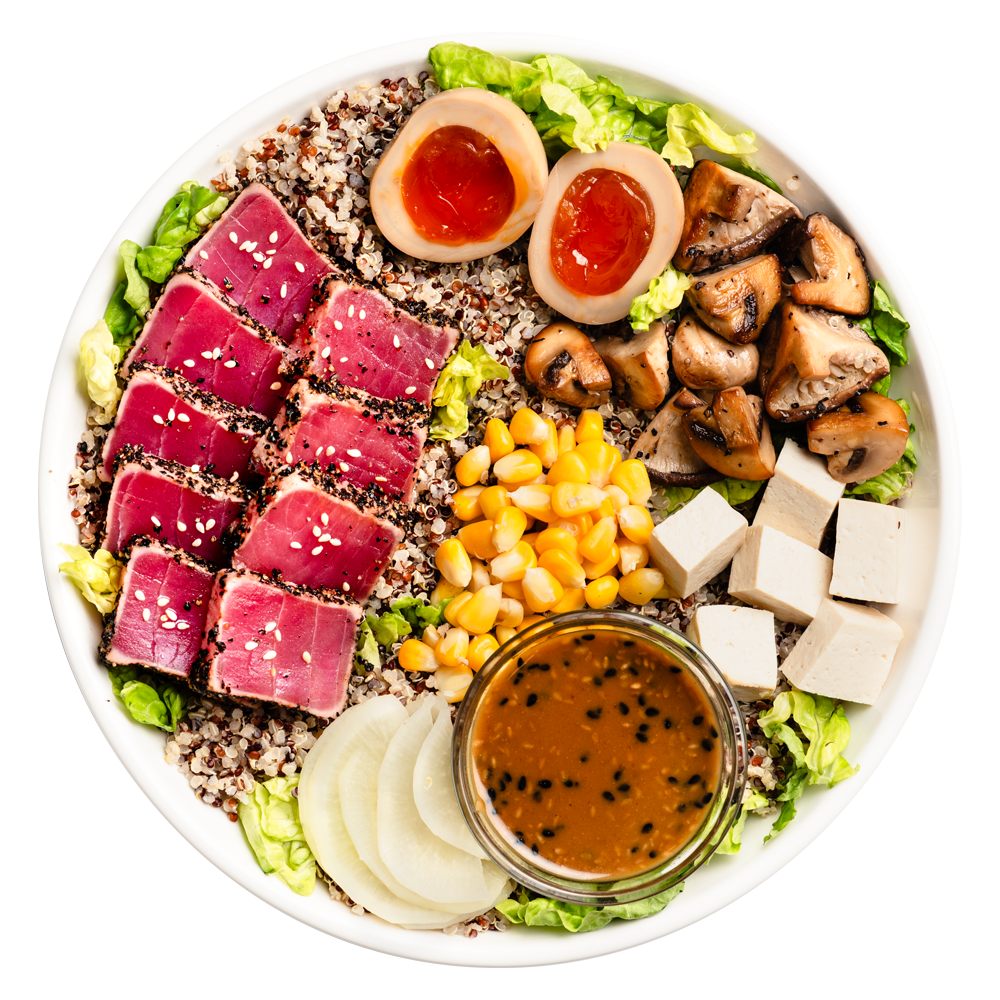
The Seoul-ful Warm Protein Bowl from SaladStop! offers a delightful fusion of flavors inspired by Korean cuisine. This bowl combines vibrant ingredients that not only satisfy your taste buds but also provide essential nutrients. Featuring seared tuna, organic quinoa, and a variety of colorful toppings, it’s a dish that brings comfort and nourishment to every meal. A Taste of Korea Korean cuisine is celebrated for its bold flavors and emphasis on fresh ingredients. The Seoul-ful bowl captures these elements beautifully. Each ingredient adds a unique texture and taste, creating a balanced and satisfying meal. Seared Tuna serves as the star of this bowl. Rich in omega-3 fatty acids, it contributes to heart health and supports brain function. Tuna is also an excellent source of high-quality protein, making it an ideal choice for anyone seeking a nutritious meal. Nutritional Benefits of Key Ingredients of Seoul-ful Health Benefits of the Seoul-ful Bowl The Seoul-ful Warm Protein Bowl is more than just a delicious meal; it’s packed with numerous health benefits. The combination of seared tuna and tofu provides a rich source of protein, essential for muscle repair and growth. This is especially beneficial for those who are active or looking to maintain a healthy weight. The organic quinoa not only adds protein but also offers a complete set of amino acids, making it a valuable addition to a balanced diet. The bowl’s vibrant ingredients promote a variety of health benefits. Antioxidants from the romaine lettuce, baked mushrooms, and sweet corn help combat oxidative stress. This can reduce the risk of chronic diseases and support overall health. The inclusion of pickled radishes contributes to digestive health. Their probiotic content supports a healthy gut microbiome, enhancing nutrient absorption and digestion. The Yuja vinaigrette provides a refreshing burst of flavor while adding vitamin C, which is vital for immune function. This dressing not only enhances the dish’s taste but also boosts its nutritional profile. The Seoul-ful Warm Protein Bowl from SaladStop! is a testament to the power of nutritious ingredients and bold flavors. It combines the best of Korean cuisine with a focus on health and well-being. Each component contributes to a balanced meal, rich in essential nutrients. By enjoying this dish, you embrace a culinary experience that nourishes both body and soul. With its vibrant colors and delicious taste, the Seoul-ful bowl is sure to become a favorite for anyone seeking a satisfying and healthy meal. Indulge in the rich flavors of this Korean-inspired creation and elevate your dining experience at SaladStop! Want to enjoy it even sooner? Pre-order your bowl now and have it ready when you are!

